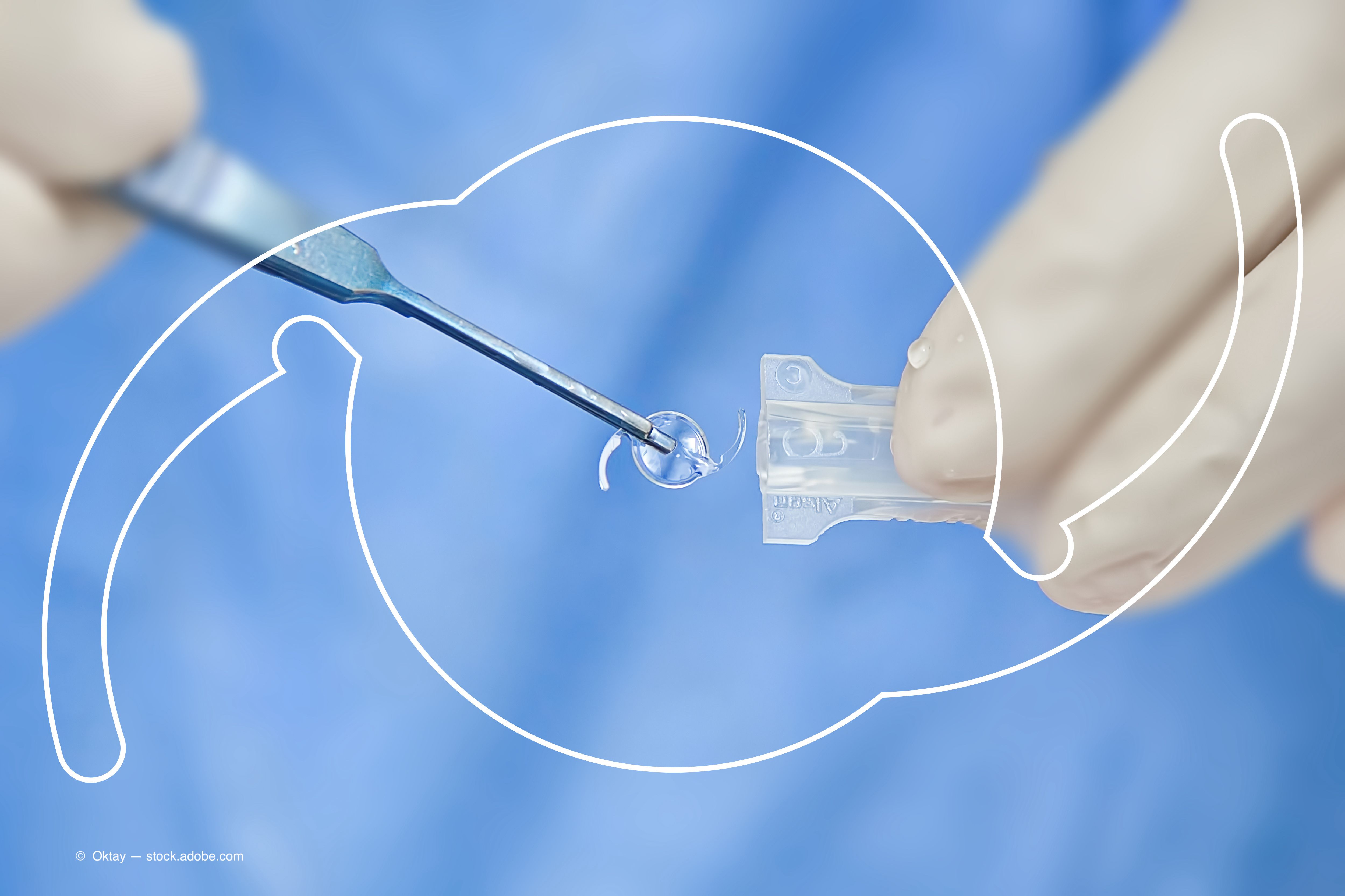Publication
Article
Digital Edition
Physicians sort out pros and cons of several new IOLs on the market
Author(s):
“Real talk” on new devices gives surgeons, patients decision-making insights
Reviewed by Priyanka Sood, MD
IOLs introduced into the US market during the last 2 years offer cataract surgeons an almost dizzying array of options for pseudophakic correction, said Priyanka Sood, MD.
Sood described the technologies and offered insights shared with her by colleagues who had experience with the various lenses.
At bottom, there are pros and cons to consider for each IOL, and achieving patient satisfaction depends on careful selection and thorough preoperative counseling.
Related: Examining stability of aspheric IOL in cataract patients
“The reality is that none of these lenses is the holy grail able to restore prepresbyopic quality vision,” said Sood, an assistant professor of ophthalmology at Emory University in Atlanta, Georgia.

Monofocal IOLs
The monofocal category was expanded recently with 2 novel aspheric hydrophobic acrylic lenses—the TECNIS Eyhance (ICB00, Johnson + Johnson Vision) and the Clareon (Alcon).
The Eyhance IOL has extended depth of focus (EDoF)-like qualities through the design of the central 1 mm of its optic. However, the Eyhance was not approved as an EDoF lens and surgeons cannot charge a premium fee for it.
Outside the central 1 mm, the Eyhance optic is similar to the monofocal ZCB00 (Tecnis, Johnson + Johnson Surgical Vision), which explains its good contrast sensitivity, Sood said.
Katie Petro, MD, told Sood she has had good results with the Eyhance and that patients who have received implants are happy.
Related: Analyzing comparative lens rotations in toric IOL platforms
Petro noted that the extra range of vision it provides is for fingertip or computer distance. Using a mini-monovision approach targeting approximately –0.5 D in the nondominant eye can give more near vision, she said.
The Clareon is built on the AcrySof IQ IOL platform. It features a precision edge design to decrease photic phenomena. A new biomaterial and manufacturing process aim to decrease the development of nanoparticle glistenings.
Sumitra Khandelwal, MD, told Sood the long history of good quality vision with the AcrySof platform is an advantage for the Clareon lens. In addition, as a monofocal lens, it avoids the drawbacks of diffractive multifocals.
Only time will tell if the design and material innovations achieve their respective goals of decreasing photic phenomena and nanoglistenings.
Related: IOL dilemma: Replacement or rescue
Light adjustable lens (LAL)
Uptake of the light adjustable lens (LAL) has been slow but is picking up momentum.
Some reasons for its late adoption, according to Neda Shamie, MD, may include the equipment cost and the workflow related to extra visits needed to perform the adjustments.
The advantage of the LAL is that it gives clinicians the ability to customize and accurately titrate the refractive power to the target for each patient.
EDoF IOL
The new IOL in the EDoF category is the AcrySof IQ Vivity (Alcon). The Vivity uses wavefront-shaping technology on its anterior surface that elongates the depth of focus, giving about a 1.5 D range of vision.
Because it is a nondiffractive lens, risks of glare and halos are minimized and quality of vision is better than with a multifocal IOL.
Related: Depth-of-focus enhancement makes target easier to hit
However, results from the FDA clinical trial showed some loss of contrast sensitivity with the Vivity lens, and it does not give good reading vision.
Pearls shared from colleagues for improving outcomes include targeting –0.25 D in the dominant eye and –0.5 to –0.65 D in the nondominant eye, intraoperatively ensuring the IOL is centered and patients have time to neuroadapt.
Multifocal IOLs
The 2 newest multifocal IOLs—AcrySof IQ PanOptix (Alcon) and Tecnis Synergy (Johnson + Johnson Vision)—almost guarantee a broader range of vision than EDoF IOLs but not the avoidance of photic phenomena, Sood said.
The PanOptix is a trifocal lens with negative spherical aberration on its anterior surface that has diffractive rings in the central 4.5 mm of its optic. For users’ perspective, Sood turned to several colleagues.
Related: Light adjustable IOLs: Treat patients with Star Trek-like technology
According to Dee Stephenson, MD, her patients are achieving great uncorrected vision at all distances. They are truly glasses-free as long as they have a healthy eye and astigmatism is corrected.
Audrey R. Talley Rostov, MD, added that the IOL has to be perfectly centered. The downsides of the PanOptix include the potential for glare, halos, and decreased contrast sensitivity at night.
Talley Rostov advised avoiding this IOL for patients younger than age 65. They tend to dislike the decrease in contrast sensitivity.
The Synergy features a hybrid of trifocal and EDoF optic technologies. Experience with this IOL, which is very new to the market, is limited, although early results seem good.
Related: Looking at technological advancements in cataract surgery
Additionally, colleagues outside the United States who have had access to the lens for a longer period of time say that the reading and intermediate vision it provides are better than that provided by other technologies.
Distance vision may not be as good as with the PanOptix, however, according to anecdotal reports.
---
Priyanka Sood, MD
E: priyanka.sood@emory.edu
Sood has no relevant financial interests to disclose.

Newsletter
Don’t miss out—get Ophthalmology Times updates on the latest clinical advancements and expert interviews, straight to your inbox.




